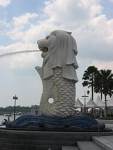Japan's highest and most famous peak
 Yoshinoyama (Mount Yoshino) in Yoshino Town, Nara Prefecture, is Japan's most famous cherry blossom spot. Besides an estimated 30,000 cherry trees, the area also offers a rich history and several temples and shrines.
Yoshinoyama (Mount Yoshino) in Yoshino Town, Nara Prefecture, is Japan's most famous cherry blossom spot. Besides an estimated 30,000 cherry trees, the area also offers a rich history and several temples and shrines.
As the base of the pilgrimage trail to sacred Mount Omine, Yoshino has been a center of Shugendo mountain worship for many centuries. The remote town also served various historical personalities as a refuge, including Emperor Go-Daigo who established a competing second imperial court there in the 14th century.
Yoshinoyama is divided into four areas, the Shimo Senbon (lower 1000 trees) at the base of the mountain, Naka Senbon (middle 1000 trees), Kami Senbon (upper 1000 trees) and Oku Senbon (inner 1000 trees) at the top of the mountain.
Together with Mount Koya and Kumano, Yoshino was designated a cultural UNESO World Heritage Site in 2004, named the "Sacred Sites and Pilgrimage Routes in the Kii Mountain Range".
Attraction place to go in YoshinoyamaCherry Blossoms The cherry blossoms of Yoshinoyama.
Kinpusenji Temple The most important temple of Yoshino.
Yoshimizu Shrine Temporary quarters of Emperor Go-Daigo.
Chikurin-in Temple
Mikumari Shrine Shrine with an unusual architecture.
For more detail click here.
Read more!











 Patong, so we are sure that you always will find something or somebody new to discover.
Patong, so we are sure that you always will find something or somebody new to discover. 
